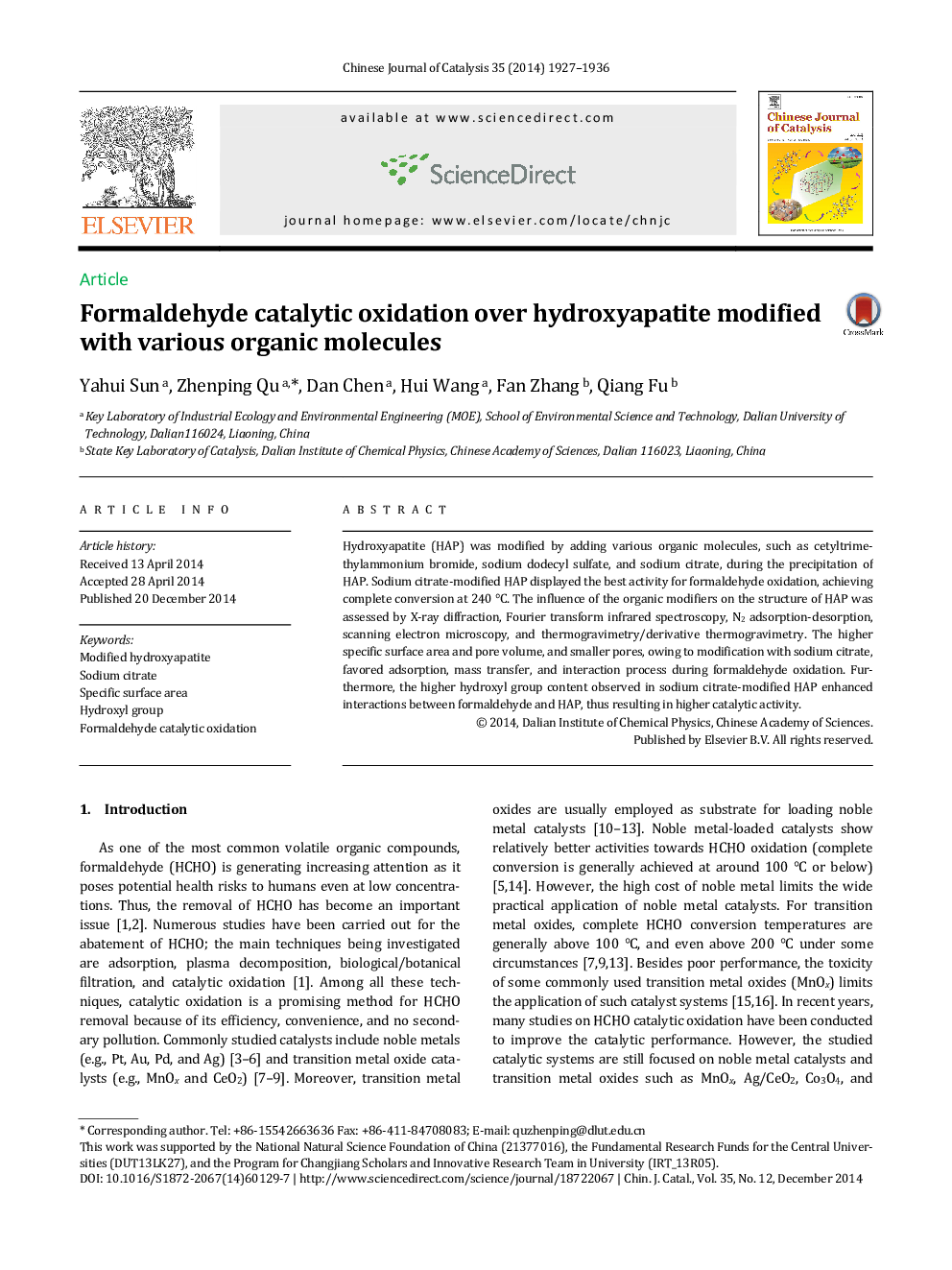| Article ID | Journal | Published Year | Pages | File Type |
|---|---|---|---|---|
| 59089 | Chinese Journal of Catalysis | 2014 | 10 Pages |
Hydroxyapatite (HAP) was modified by adding various organic molecules, such as cetyltrimethylammonium bromide, sodium dodecyl sulfate, and sodium citrate, during the precipitation of HAP. Sodium citrate-modified HAP displayed the best activity for formaldehyde oxidation, achieving complete conversion at 240 °C. The influence of the organic modifiers on the structure of HAP was assessed by X-ray diffraction, Fourier transform infrared spectroscopy, N2 adsorption-desorption, scanning electron microscopy, and thermogravimetry/derivative thermogravimetry. The higher specific surface area and pore volume, and smaller pores, owing to modification with sodium citrate, favored adsorption, mass transfer, and interaction process during formaldehyde oxidation. Furthermore, the higher hydroxyl group content observed in sodium citrate-modified HAP enhanced interactions between formaldehyde and HAP, thus resulting in higher catalytic activity.
Graphical AbstractBetter adsorption properties, longer retention times, and larger contents of OH groups of hydroxyapatite modified with sodium citrate (SC) (HAPSC) lead to better interaction between the reaction gas and active sites and higher activity towards HCHO oxidation.Figure optionsDownload full-size imageDownload as PowerPoint slide
